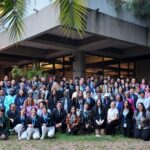After a hiatus since the Concorde’s retirement in 2003, supersonic passenger flights are poised to revolutionize air travel once again.
Boom Supersonic’s Vision
Denver-based Boom Supersonic is at the forefront of this resurgence. Their prototype, the XB-1, recently achieved a significant milestone by breaking the sound barrier over California’s Mojave Desert, reaching speeds of Mach 1.1.
This accomplishment paves the way for their commercial airliner, Overture, designed to carry 64-80 passengers at speeds up to Mach 1.7, potentially halving transatlantic travel times. Major airlines, including American Airlines and United Airlines, have already placed orders, signaling strong market interest.
Environmental Considerations
Addressing environmental concerns, Boom plans to power Overture with sustainable aviation fuel (SAF), aiming to reduce the carbon footprint associated with high-speed air travel. The company is also exploring advanced materials and design techniques to enhance fuel efficiency and minimize noise pollution.
Challenges Ahead
Despite these advancements, challenges remain. Sonic booms, regulatory hurdles, and the need for extensive infrastructure updates are significant obstacles. However, with ongoing technological innovations and a growing emphasis on sustainable practices, the dream of supersonic passenger flights is edging closer to reality.
The aviation industry is on the cusp of a new era, where speed and efficiency converge to redefine the future of air travel.











